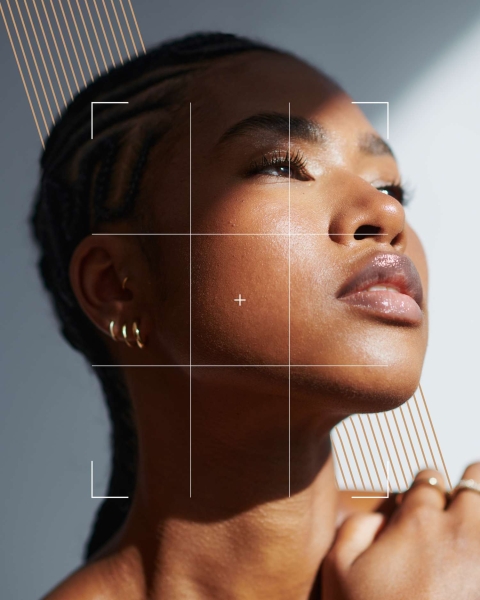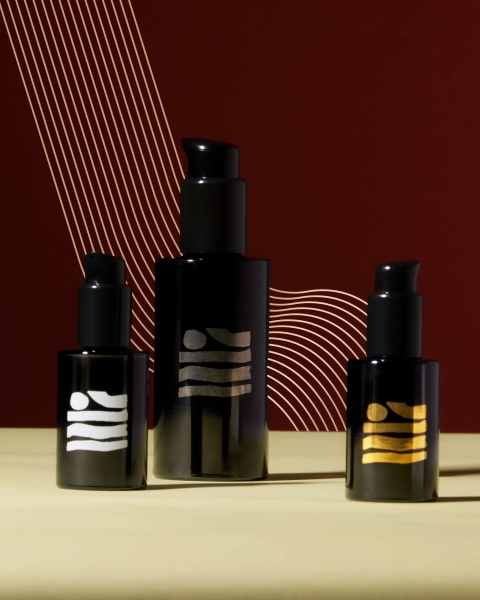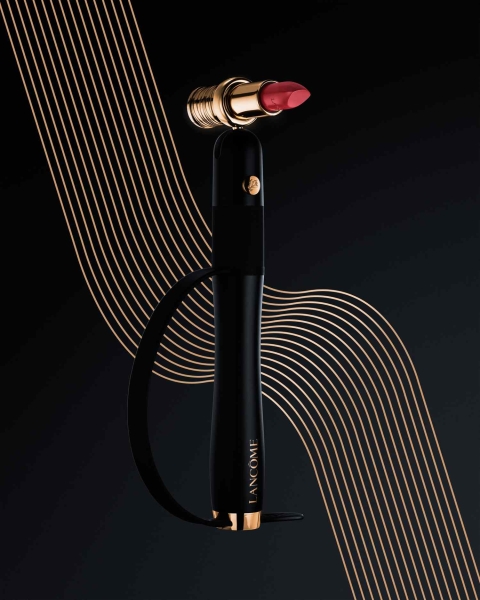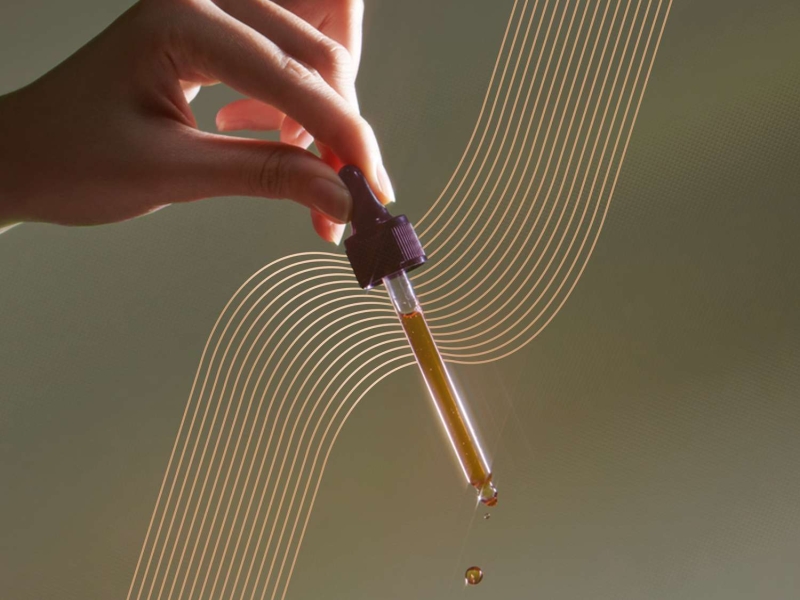Contents
Science, technology, and a new emphasis on longevity are driving major change.
Movies and TV have long predicted what the future of fashion and beauty will look like. Take the 1995 film Clueless, where, in the now canonical closet scene, Cher (Alicia Silverstone) uses her computer (a giant desktop PC, naturally) to quickly scan her wardrobe, swiping until she puts together the ideal outfit. Fast forward to 2024, and virtual closet apps are just a download away on those computers that are perpetually attached to the palms of our hands. But while Cher may have seen the fate of fashion in her cinematic crystal ball, not even the most realistic science fiction films of the ‘90s have accurately estimated the leaps and bounds of beauty innovations.
Office-quality laser treatments are now handheld and safe to deploy in the comfort of our own bathrooms. Personalized skin care is at—and in some cases, already on—our fingertips. It's funny to imagine how differently Tai’s makeover would have gone down if Cher and Dionne had had access to Sephora’s Color IQ tool, which uses AI to help customers find their best foundation match. But this is just the beginning.
Thanks to social media’s influence, an increasingly global audience, and the continued popularity of the “wellness movement,” the appetite for beauty advancements is only growing. Long-overdue diversity initiatives are transforming how we interact with beauty and who can access it. A growing focus on longevity coupled with scientific achievements have put skin care—the ability to fight the signs of aging—in a new stratosphere.
So what do the next 30 years look like? Here, beauty and personal care insiders and experts take stock of how far we've come and predict what the future holds.
The Omnipresence of AI
Just a decade ago, the idea of AI still seemed like a futuristic fever dream, but the future is now. Guive Balooch, Global Managing Director of Augmented Beauty and Open Innovation at L’Oreal Groupe, says an avenue where AI will continue to fuel innovation is in product development, design, and manufacturing. “Computational biology scientists are using AI to guide them in discovering new molecules,” says Balooch. AI fast-tracks discovery with less need for trial and error. “We have had a very narrow range of innovation, but the consumer demand is enormous,” adds Balooch. Sienna Piccioni, head of beauty at WGSN, says AI will limit resources used in production and points to biotech companies like Ireland-based Nuritas, which created the first AI-discovered nature-identical peptide. “This will also reduce our reliance on using natural ingredients, which is becoming no longer sustainable,” Piccioni says. AI also promotes efficiency in research and development. “The data-driven insights from AI will allow brands to identify emerging beauty preferences, thus enabling them to optimize their R&D decisions,” says Lauren Goodsitt, global beauty and personal care director for Mintel.
Diagnostics and, in turn, hyper-personalization will be a huge springboard for AI, particularly as demand in the category has grown; according to Mintel data, 62 percent of US consumers are interested in personalized beauty products. Haut.AI is the first to enable users to see how their skin will age over time with certain products using SkinGPT. And L’Oreal has signed a partnership with BreezoMeter, which has been using AI to measure pollution, pollen, UV, and air quality within a nine-foot radius, all of which impacts our skin and hair-care routines. “We’re going to embed that technology, so we’ll be able to give people recommendations that are adapted to their environment,” says Balooch.
Virtual try-on systems, such as Sephora’s Virtual Artist, are a boon for time-strapped customers and will become more commonplace, as will AI-powered facial imaging technology (like Shiseido’s Skin Visualizer, a device that scans skin and provides a detailed report) and the gathering of personal data metrics for product development (like brands Prose, Proven, and Curology already employ). Piccioni also mentions skin health advisor and recommendation engine Skin Dossier, which, besides patented hyper-spectral facial imaging, also factors in users’ geolocation, DNA data, lifestyle, and optional blood testing before suggesting products. “AI will continue to be used to help eliminate decision fatigue and enhance the customer experience,” says Piccioni. That enhancement will come via AI-driven virtual beauty assistants providing advice both IRL and online, says cosmetic chemist Esther Olu.

While fragrance, being so intensely personal and inextricably tied to memory, has been the hardest to hack, companies like Givaudan and NOS Emotion Tech are already making progress: the former with Myrissi, an AI tool that, thanks to a massive consumer response database, provides scent associations for fragrance brands; and the latter with Emotiontech, an algorithm that will build custom scents from emotional cues culled from your own photos. So much of the joy of beauty is rooted in the thrill of discovery, but Balooch is convinced that this notion can coexist with tech. “Ten years ago, I would have said the big goal of tech is beauty for everyone, but to reach everyone, you need to reach an individual,” he adds.
The Skin Science Surge
Biotech advances have informed skin-care advances and led to the appearance of regenerative ingredients, like growth factors and neuropeptides (also known as nature’s Botox); and innovations in delivery systems, like encapsulation technology, ensure that those active ingredients are able to remain more stable and penetrate deeper into the skin, says Olu. While we are in the initial stages of research around the skin microbiome (and products that support our skin’s natural flora, thereby maintaining the barrier and addressing issues like acne and eczema) and biomimetic ingredients (believed to be more effective anti-agers since they mimic the skin’s natural functions), Olu says they will be major areas of focus in the years ahead. “Scientists are exploring more bio-fermented ingredients, which potentially offer similar benefits to retinols and AHAs but with reduced irritation,” says Olu.
Paul Jarrod Frank, M.D., a New York-based celebrity dermatologist, predicts a groundswell of research around regenerative medicine, exosomes, and stem cells, which will have a transformative effect on skin’s ability to heal and renew. “There will be a day when there will be scarless breast lifts and face lifts,” says Dr. Frank. That genomic research will inform a new generation of personalized skin-care solutions. “We’ll be able to address specific concerns with unprecedented precision,” says Olu, adding that progress in nanotechnology will enhance the delivery and efficacy of active ingredients. And topical skin-care products will play a supporting role to devices, which Dr. Frank thinks will get even more high-tech. Jessica Matlin, director of beauty and home at Moda Operandi, where the Lyma laser set (priced at $2,695) has been a runaway hit, agrees: “Social media is pushing technology to beauty consumers’ feeds, so they are primed for new technology more quickly than they would have been 5 or 10 years ago,” says Matlin. “A laser doesn’t seem so out of place in the bathroom once you’ve seen it a dozen times on Instagram. Who knows what we’ll accept as normal in another 10 years?”

The Wellness Paradigm
“Consumers today are taking a more holistic approach to their lives than ever before, and the concept of wellness is inextricably linked to beauty and vice versa,” says Marguerite Longo, vice president at Neutrogena. Longo points to the skin care is self-care movement, the “everything shower,” and the surge in beauty supplements as examples of this blurring of the lines between beauty and wellness.
“The last few years haven’t been about glamor, but looking rested, glowing, nonchalant, and undone,” says Matlin. “Wellness has become an aesthetic unto itself. It’s the Erewhon smoothie, the little tank, the dewy skin, the slicked back hair, these all ooze wellness.” With 82 percent of U.S. consumers placing wellness as a top priority in their daily lives (according to a recent McKinsey report), this will only continue in the years to come, says Longo.
Scent will increasingly converge with mental health: Givaudan and IFF have invested heavily in research around fragrance and mood, and eScent, a burgeoning wearable technology that literally releases scents when the mood strikes. Skin care is following the same course, as categories like neurocosmetics gain steam. New skincare brand Neuraé by beauty giant Sisley is focused myopically on the mind-brain connection. “As consumers place greater emphasis on wellness, they will look to the next iteration of beauty and personal care products to provide additional benefits,” says Goodsitt. “In the coming years, brands will invest in the science behind psychodermatology and neurocosmetics to prove product efficacy and substantiate wellness claims.” And consumers think these mood-boosting qualities have value: according to Mintel data 33 percent of US consumers will pay more for them.
The Longevity Conversation
The collective fascination with Blue Zones and desire to biohack and optimize every aspect of our lives, from diet to sleep, will continue to influence beauty. “Consumers no longer feel or look what traditional norms say they should for their age, and as people are living longer, they want to feel healthy and look [the way] they feel for as long as possible,” says Piccioni. Brands are beginning to focus on developing products that impact skin on the cellular level and target biological aging (which can be slowed or reversed), she adds.
Buzzy longevity-centered ingredients like Urolithin A, NAD, and Glutathione (find them in Timeline Nutrition, Aramore, and Auro Skincare, respectively) will become part of the skincare vernacular, and our routines will shift to focus more on stopping damage before it starts. Estée Lauder recently announced a far-reaching longevity initiative in conjunction with the Stanford Center on Longevity that will fuel research and product development. “Gen Z are set to live longer than previous generations, and they’re keen on maintaining their health and youthful appearance for as long as possible and will invest to do so,” says Piccioni.
The Mainstreaming of Cosmetic Treatments
Chalk it up to the proliferation of the breezy, medi-spa model and the last decade’s filtered lens on beauty (i.e. Instagram face), but treatments like Botox, Juvederm, or lasers, once reserved for a niche audience and performed within the confines of a doctor’s office, have continued to edge towards the mainstream. “It’s easy to forget that these are medical procedures because the conversation around them on social media—and often the marketing—feels similar to that of a new shampoo or lip gloss,” says Matlin.
This has been a double-edged sword. New York-based plastic surgeon Melissa Doft, M.D., wonders how you guarantee safety as procedures at medi-spas become more ubiquitous. But the greater demand from a broader audience (in terms of age, ethnicity, and gender) has, adds Dr. Frank, also pushed the technology of the devices forward.
More significant in the years ahead than the increasing prevalence of procedures is how people will engage with them. Traditionally, a cosmetic surgery patient has been what Dr. Frank calls post-aging: someone in their fifties or older who is coming in to address visible signs of aging. “There’s a whole new world of ‘prejuvenation’ happening, and younger generations of patients are starting earlier,” says Dr. Frank. According to WGSN data, more Gen Z and millennials are seeking out these “prejuvenation” measures. Less aggressive and less dramatic, patients young and old will be more focused with their treatments (or “tweakments” as they’ve come to be called) on the long game, taking a pro-aging versus anti-aging approach, says Dr. Frank.
Dr. Doft notes that the recent filler backlash is reflective of this shift. “Filler doesn’t have the long-term outcome; it’s expensive, you have to continue to do it, and it can distort your face and potentially decrease some of the fat you want to keep,” she says.
How we heal will also improve. “We’re going to find ways to remove skin scarring with a combination of technology to trick the healing capacity of the body, like we do with Ellacor, and newer regenerative medicine techniques,” predicts Dr. Frank. And that, too, will have an impact on topical skincare: “Expect to see a rise in claims like wound-healing and safe for use pre-and post-surgery,” adds Goodsitt. Dr. Doft foresees advancements, also, in the treatment of cellulite and a streamlining of non-invasive lasers. “People want lasers with less downtime, and many are still scared of burns and pigmentation changes,” she adds. That fear, says Dr. Frank, is something that AI will likely help eradicate as the technology perfects automated settings and safety measures.
The Inclusivity Imperative
When it launched in 2017 with a 40-shade foundation range, Fenty ignited an urgent conversation around beauty brands and inclusivity—and the historical lack of it. Some companies (like Maybelline, Makeup by Mario, Haus Labs, and Make Up For Ever) have since scaled up shade offerings, says Olu, while others have been rightfully criticized for tokenistic gestures. “Accessibility remains a challenge for many consumers, particularly those with very light or very deep skin tones,” says Olu.
While retailers like Target and Sephora pledged to allot 15 percent of shelf space to Black-owned brands, founders have struggled to gain access to capital. “Since 2021, we are witnessing a downturn in funding for Black-owned beauty brands that have proven success and scale,” says Nyakio Grieco, co-founder of Thirteen Lune and founder of Relevant Skincare. “So, while DEI efforts have propelled the conversation forward, we are seeing a slowdown in funding which is counterproductive.” This is why there’s an urgent call from industry leaders, like Grieco, for more funding for BIPOC-owned brands, which is the only way to fortify a more equitable beauty market—now and especially decades down the line.
Olu says serving a more diverse audience in the years ahead will also require a more nuanced understanding of undertones. “By offering shades with diverse undertones, brands can ensure that their products cater to a broader range of skin tones and preferences,” says Olu, adding that there is still need for development in categories beyond foundation (like concealer and lipstick) and in marketing efforts that center individuals from underrepresented and marginalized groups. (Dove's Real Beauty campaigns are an example of getting it right.) The sector is primed for progress because of the immense demand, as beauty spending by Black consumers is enormous and growing (according to a report by NIQ, a consumer intelligence company, it was more than $9 billion last year).

The same goes for an older consumer as age inclusivity will take on new importance. “Age diversity and inclusivity is just good business; Gen X spends the most of any generation in the U.S.,” adds Grieco. In developing products, Neutrogena centers prevention, protection, and a pro-aging message, says Longo.
Toplining future DEI initiatives is where AI can do some serious good. “AI can help innovate more personalization and customization, which is an extension of inclusivity, allowing us to get more nuanced not just about tone, but also skin sensitivities, hormonal changes, and autoimmune issues,” says Grieco. At Lancôme, AI powers their HAPTA project, a miniaturized robotic-like arm for consumers who can’t use beauty products because of physical limitations. “It learns something like a tremor in real time and then adjusts so that it can be steady enough for you to apply lipstick,” Balooch explains. Piccioni points to how Google recently integrated the Monk Skin Tone Scale (to improve AI skin tone representation) into its tech and Estee Lauder’s AI-powered voice-enabled makeup assistant, which uses smart mirror technology to help visually impaired people apply makeup. “There is a huge opportunity to improve AI beauty tech when it comes to inclusivity and diversity,” she adds. At its best, AI has the potential to help beauty brands connect with their consumer on a much more individualized level. This is, as Grieco says, what they’re hoping for: “People want and should be able to see themselves in the beauty market.” Something we can all look forward to.

